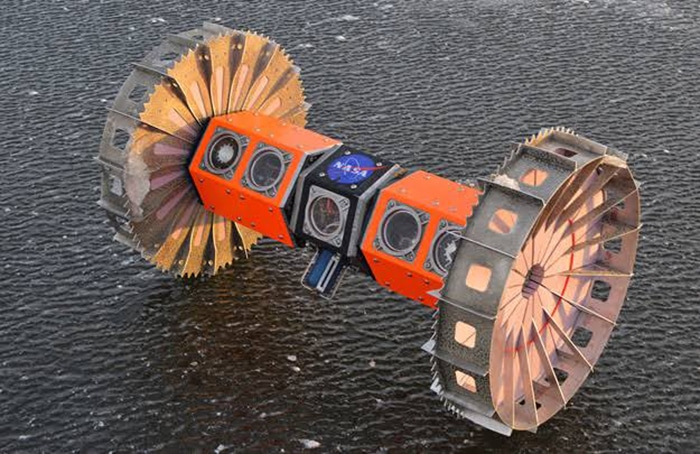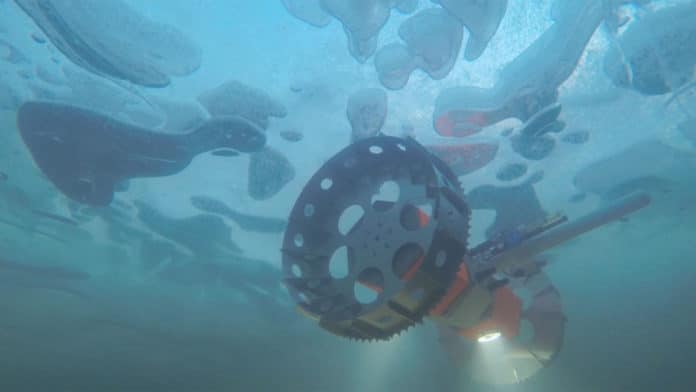NASA has been working on many technologies to explore the Moon or Mars. Its Mars 2020 rover is at the final stage of construction. However, both have something in common – they are solid celestial bodies, with surfaces of rock and sand. But what about exploring more exotic places such as the Jupiter’s moon Europa and Saturn’s moon Enceladus, which basically are covered in deep oceans hidden beneath thick, frozen surfaces.
To prepare for this possible scenario, NASA is working on an aquatic rover capable of immersing itself in frozen waters for underwater exploration in extraterrestrial, icy waters. The rover, called BRUIE, or the Buoyant Rover for Under-Ice Exploration, will spend the next month testing its endurance at Australia’s Casey research station in Antarctica, in preparation for a mission that could one day search for life in ocean worlds beyond Earth.
According to the engineers at NASA-JPL, the Antarctic waters are similar to the seas of an icy moon, which makes them ideal for testing BRUIE technology. The Buoyant Rover is around three feet (1 meter) long and equipped with two wheels to roll along beneath the ice. It can take images and collect data on the important region where water and ice meet.

“We’ve found that life often lives at interfaces, both the sea bottom and the ice-water interface at the top. Most submersibles have a challenging time investigating this area, as ocean currents might cause them to crash, or they would waste too much power maintaining position,” said lead engineer Andy Klesh. “BRUIE, however, uses buoyancy to remain anchored against the ice and is impervious to most currents. In addition, it can safely power down, turning on only when it needs to take a measurement so that it can spend months observing the under-ice environment.“
During the Antarctic field tests, the rover will remain tethered to the surface, and the team will test its suite of instruments, including its two live, high-definition cameras.
“BRUIE will carry several science instruments to measure parameters related to life, such as dissolved oxygen, water salinity, pressure, and temperature,” said Berisford, who will attach the science instruments if early tests go well.
The team also says that it will continue working on and testing BRUIE until it can survive under the ice for months at a time, remotely navigate without a tether and explore the ocean at greater depths.
NASA is also working on drones and crafts to explore the dark side of Venus.
